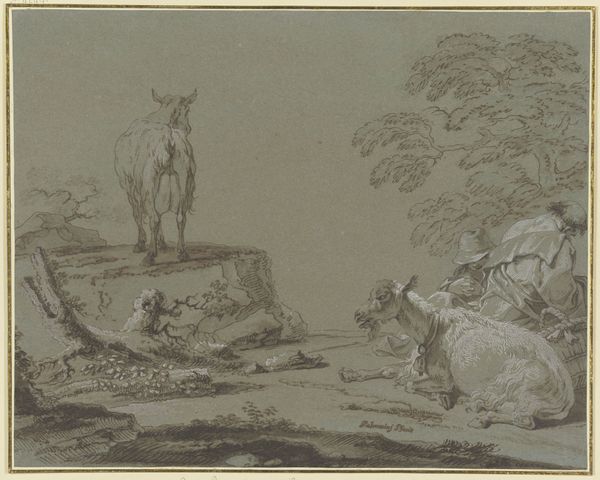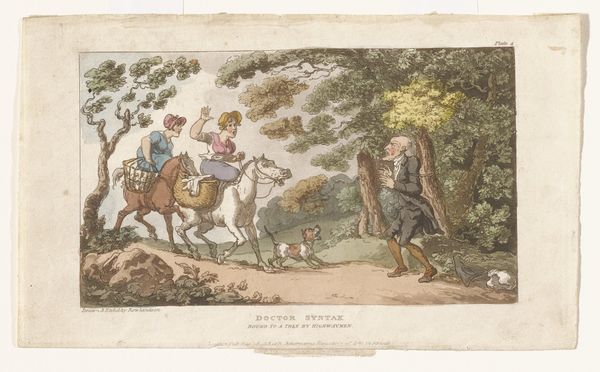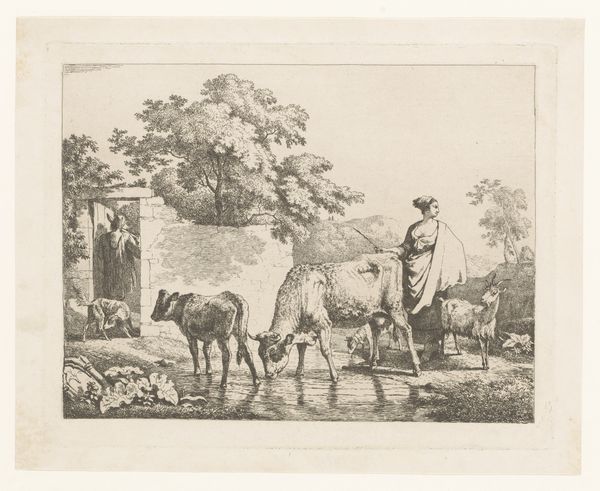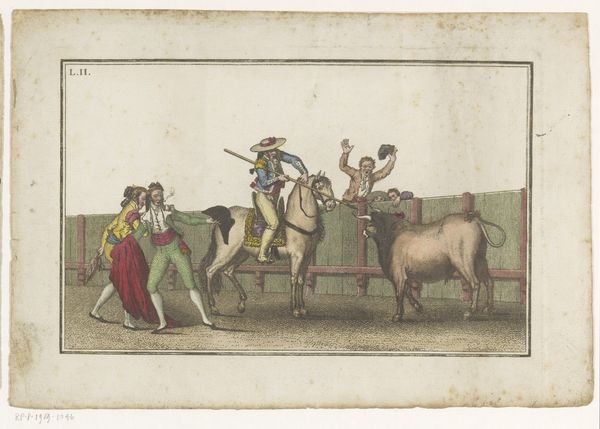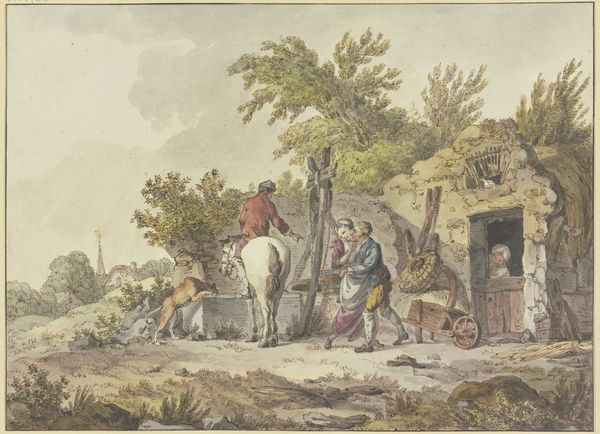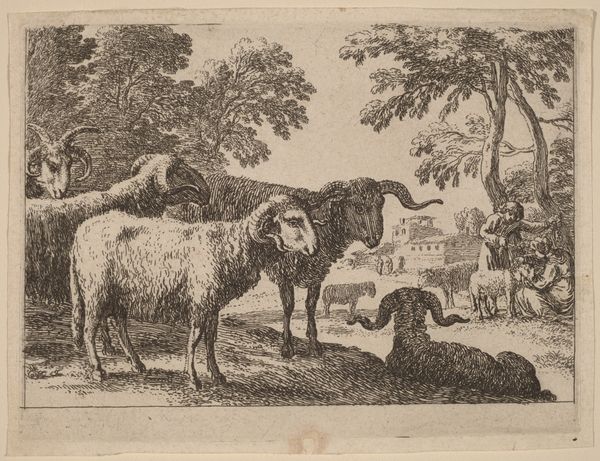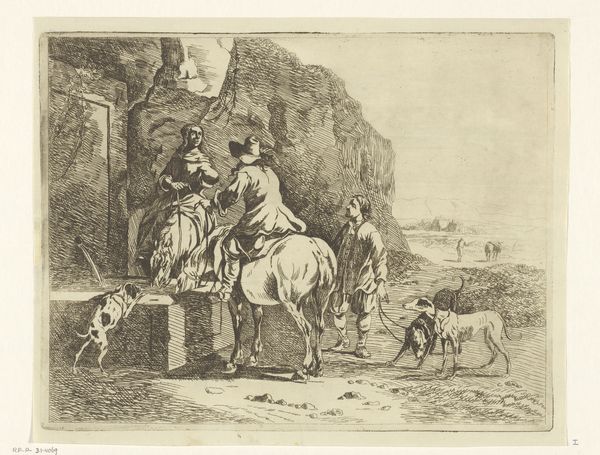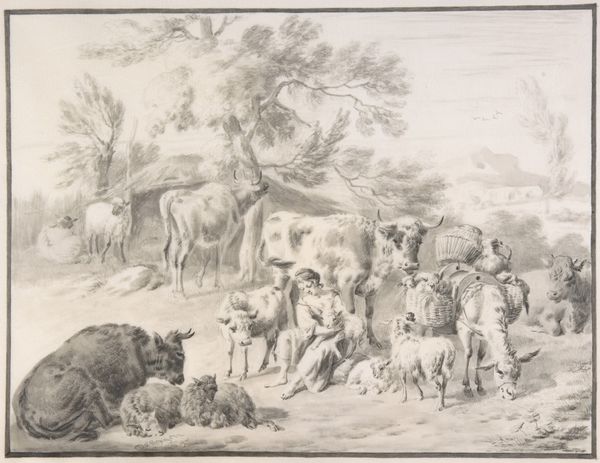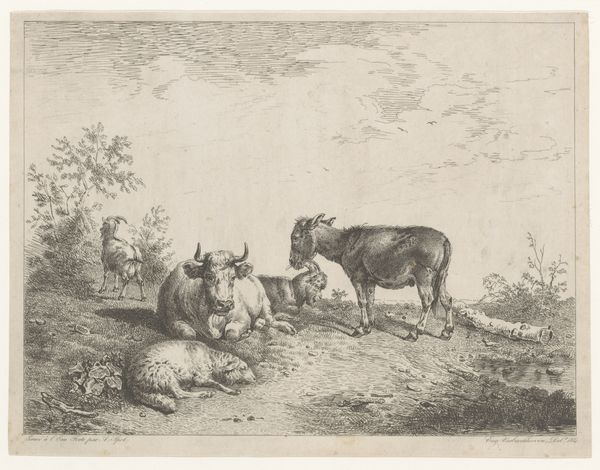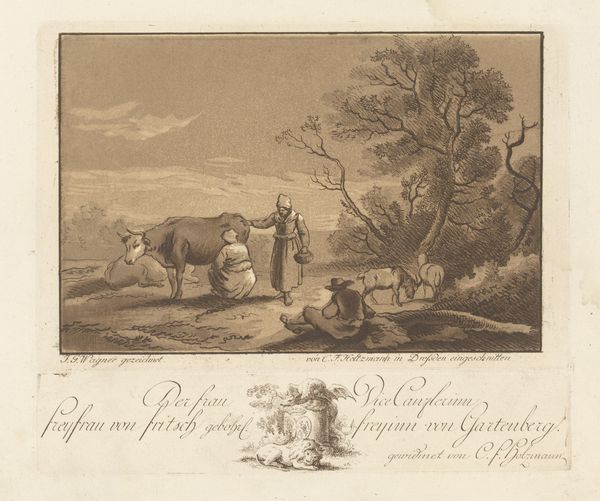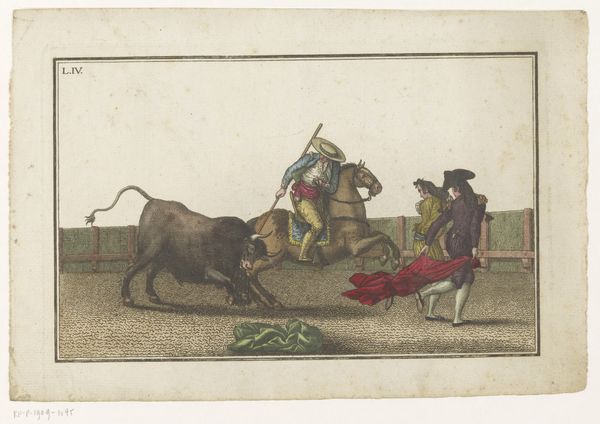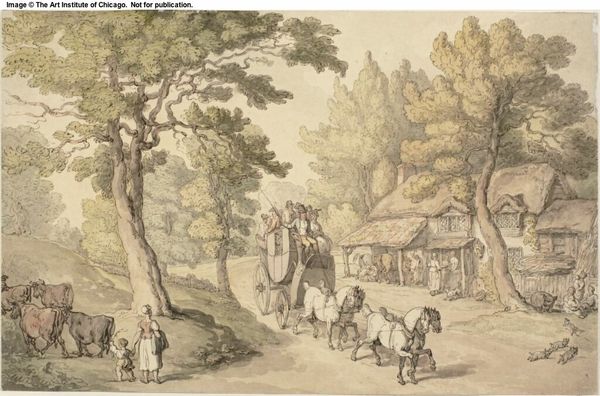
Dimensions: 5 1/2 x 8 in. (13.97 x 20.32 cm) (sheet)
Copyright: Public Domain
Editor: Here we have Thomas Rowlandson's "Doctor Syntax Sketching After Nature," created around 1815. It's a hand-colored etching and aquatint, quite charming. The scene feels almost theatrical, doesn't it? What social commentary do you see embedded in this seemingly simple landscape? Curator: That "theatrical" feel is key. Rowlandson was producing this during a period of intense debate about the role of art and the artist in British society. How should the landscape be depicted? For whom? And who has access to that depiction? The figure of Dr. Syntax, sketching while surrounded by bemused onlookers and indifferent livestock, is subtly satirical. Editor: Satirical in what way exactly? Curator: Consider the rise of picturesque tourism. People traveled specifically to *find* scenes worthy of painting or sketching, often romanticizing rural life. Rowlandson seems to be questioning the artificiality of this pursuit, the way the “picturesque” could become a performance for both artist and audience. Look at how Dr. Syntax is positioned, almost as a spectacle himself. Editor: I see your point! He's not just observing nature; he's part of a staged scene, and the social dynamics are central to understanding the work. It makes you think about who art is really *for*, doesn’t it? Curator: Exactly! And it prompts us to ask: is the landscape presented authentically, or is it being commodified and consumed? Rowlandson doesn’t give us easy answers, but that questioning is precisely the point. How did institutional forces affect the presentation of this art piece for consumption by the British public? Editor: This makes me realize I often look at art in a vacuum, but its meaning is so intertwined with the socio-political context. Thanks for this. I'm viewing art with new eyes today. Curator: And I’m pleased to learn of your refined view on Rowlandson's drawing.
Comments
minneapolisinstituteofart about 2 years ago
⋮
Rowlandson's Doctor Syntax The Tours of Doctor Syntax was an immensely successful series; Rowlandson produced the pictures, which were made into a story by the author William Coombe, who wrote poems to accompany them. Three satirical books were published (1809-21) that follow the hilarious misadventures of a foolish clergyman and schoolmaster, Dr. Syntax, a kind of English Don Quixote. The absurdity of Syntax's character and mishaps incisively mock the customs of the day. Rowlandson devoted most of his time to magazine and book illustration in the second-half of his career, working primarily for the enterprising publisher, Rudolph Ackermann (1764-1834), who printed the Doctor Syntax series. Rowlandson's later activities mark a gradual shift in the caricature genre, when publishers and artists moved away from the production of single, high-quality, expensive prints to the cheaper comical cartoons that were featured in widely distributed magazines. Weeklies like Punch and the Illuminated Magazine were founded in the 1840s and would become a staple of Victorian England. Caricature in this new era served more frequently as illustrated journalism, with cartoons representing an editorial point-of-view, often produced by professional illustrators hired by magazines.
Join the conversation
Join millions of artists and users on Artera today and experience the ultimate creative platform.
